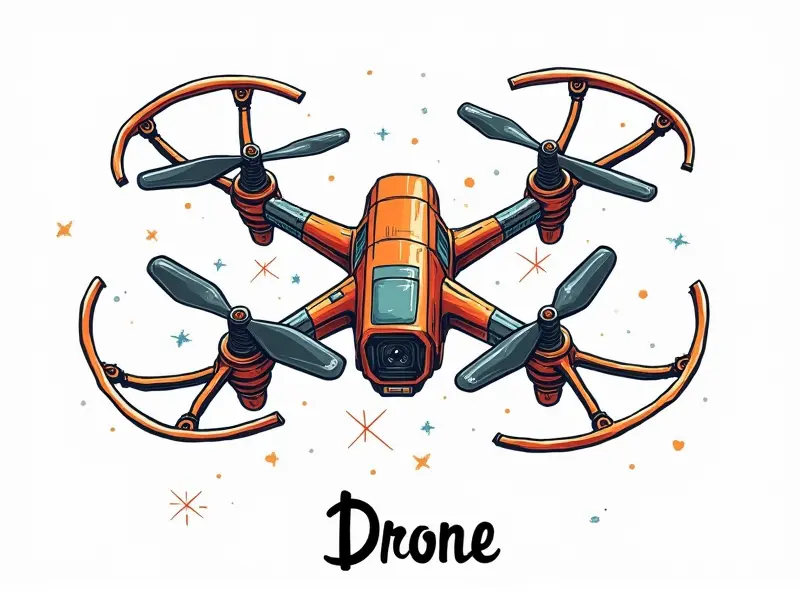FPV drone propeller size guide

Mastering FPV Propeller Selection
Selecting the right propellers for your FPV drone is crucial for achieving optimal performance. The size and type of propellers you choose can significantly affect your drone's speed, stability, and control during races or freestyle flights.
Optimal Prop Sizes for FPV Racing Drones
The propeller size plays a pivotal role in determining the flight characteristics of an FPV racing drone. Generally, smaller props are used for high-speed racing drones to reduce rotational inertia and increase responsiveness, while larger props offer more lift at lower RPMs.
Quick Guide to FPV Drone Props
- Propeller Diameter: Measured from tip to tip across the propeller. Common sizes range from 45mm to 60mm for racing drones.
- Cup Design: Propellers with a cup design at the leading edge can improve thrust and efficiency, especially in high-speed applications.
- Pitch: The distance a propeller would move forward if it were turning in an infinitely thick medium (like gelatin). Lower pitch is better for quick acceleration and maneuverability.
Best Propellers for FPV Speed & Control
To maximize speed and control, choose props with high responsiveness. A 45mm to 50mm diameter propeller with a low pitch (6-8) is ideal for fast acceleration and quick turns.
Tips:
- Opt for carbon fiber or composite materials for durability and reduced weight.
- Select props with balanced cup designs to enhance thrust efficiency.
How Prop Size Affects FPV Performance
The size of your propellers directly influences the drone's power-to-weight ratio, flight duration, and overall maneuverability. Smaller props enable faster speeds but may sacrifice lift capability in certain conditions.
- Faster Speeds: Smaller diameter props (45-50mm) are best for high-speed racing drones.
- Better Lift Capability: Larger diameter props (51-60mm) offer better lift and stability, especially in windy conditions.
Beginner's FPV Propeller Buying Guide
If you're new to FPV drone racing or freestyle flying, start with a set of mid-range propellers that balance speed and control. A 50mm diameter propeller with a pitch around 6-8 is a good starting point.
FPV Propellers: Size Matters!
The size of your FPV drone's propellers can make or break the flying experience. Choose wisely based on your specific needs and flight style.
Maximize Performance with Correct FPV Props
- Diameter: Determine if you need a smaller diameter for speed or a larger one for lift capability.
- Pitch: Opt for lower pitch for quick acceleration and maneuverability, higher pitch for sustained flight.
- Material: Carbon fiber offers durability and reduced weight compared to plastic.
Understanding FPV Propeller Dimensions
The dimensions of an FPV propeller include its diameter, pitch, and cup design. These factors collectively determine the prop's performance characteristics.
- Diameter: The overall size of the propeller from tip to tip.
- Pitch: The angle at which the blades are angled relative to the rotational axis.
- Cup Design: A small curve or cup on the leading edge can improve thrust and efficiency.
The Impact of Prop Size on FPV Flight
The size of your propellers impacts various aspects of flight, including speed, lift, stability, and control. Smaller props are ideal for quick maneuvers and high-speed racing, while larger props provide better lift in windy conditions.
Choosing the Right FPV Drone Prop Size
- Racing: Opt for smaller diameter props (45-50mm) with low pitch for fast acceleration and quick turns.
- Freestyle: Consider a balanced prop size (51-60mm) to achieve both speed and lift capability.
Conclusion
Selecting the right FPV drone propellers is critical for achieving optimal performance. By understanding the impact of propeller dimensions, you can tailor your setup to meet specific flight requirements, whether it's high-speed racing or freestyle flying. Always consider factors such as diameter, pitch, and material when choosing props to maximize your drone's potential.

